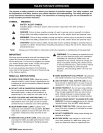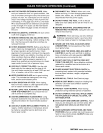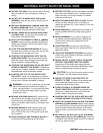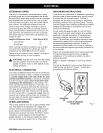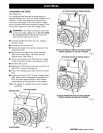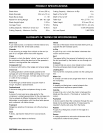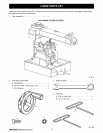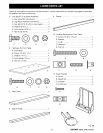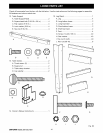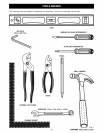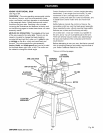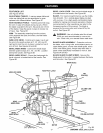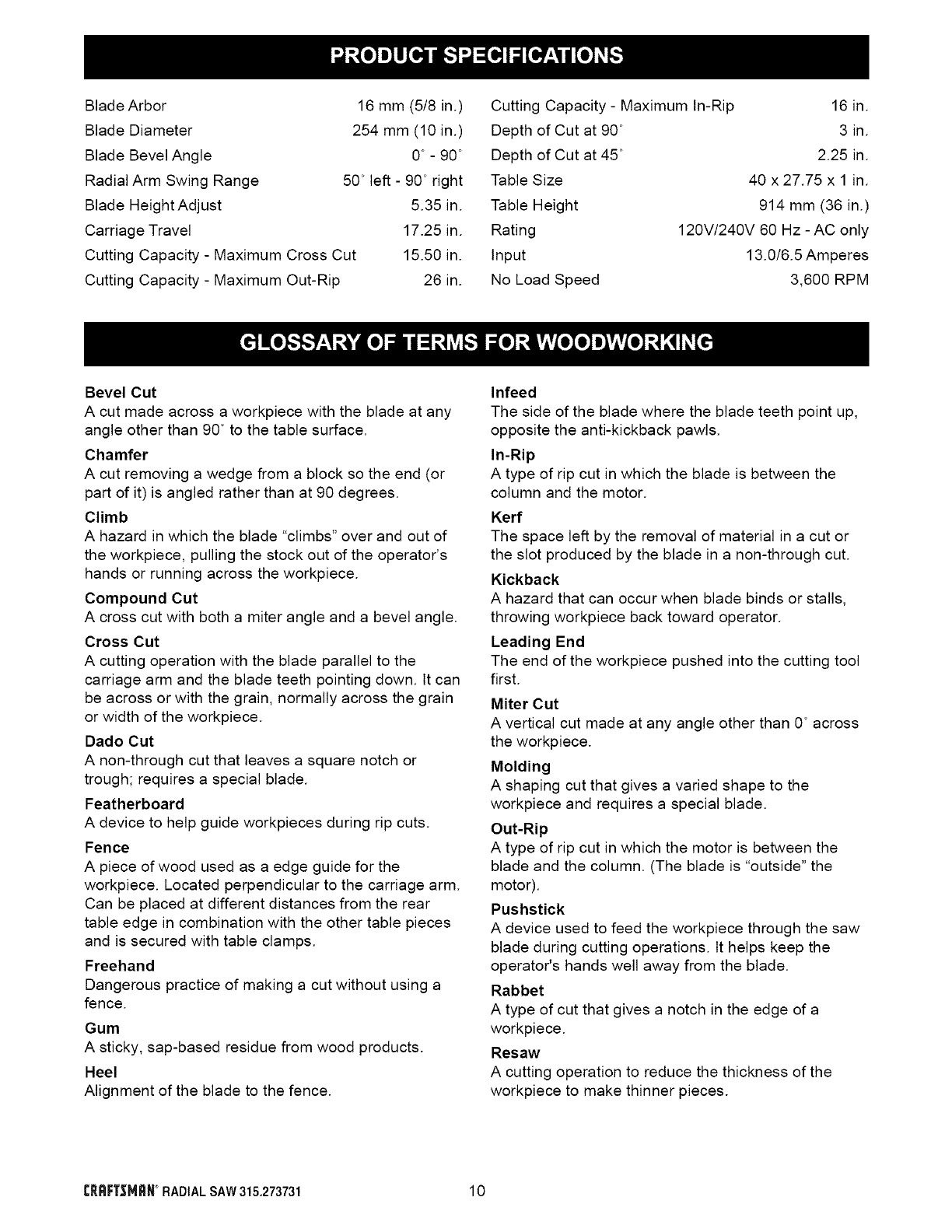
Blade Arbor
Blade Diameter
Blade Bevel Angle
Radial Arm Swing Range
Blade Height Adjust
Carriage Travel
Cutting Capacity - Maximum Cross Cut
Cutting Capacity - Maximum Out-Rip
16 mm (5/8 in.)
254 mm (10 in.)
0° _90 °
50 °left - 90 °right
5.35 in.
17.25 in.
15.50 in.
26 in.
Cutting Capacity- Maximum In-Rip
Depth of Cut at 90 °
Depth of Cut at 45 °
Table Size
Table Height
Rating
Input
No Load Speed
16 in.
3 in.
2.25 in.
40 x 27.75 x 1 in.
914 mm (36 in.)
120V/240V 60 Hz -AC only
13.0/6.5 Amperes
3,600 RPM
Bevel Cut
A cut made across a workpiece with the blade at any
angle other than 90° to the table surface.
Chamfer
A cut removing a wedge from a block so the end (or
part of it) is angled rather than at 90 degrees.
Climb
A hazard in which the blade "climbs" over and out of
the workpiece, pulling the stock out of the operator's
hands or running across the workpiece.
Compound Cut
A cross cut with both a miter angle and a bevel angle.
Cross Cut
A cutting operation with the blade parallel to the
carriage arm and the blade teeth pointing down. It can
be across or with the grain, normally across the grain
or width of the workpiece.
Dado Cut
A non-through cut that leaves a square notch or
trough; requires a special blade.
Featherboard
A device to help guide workpieces during rip cuts.
Fence
A piece of wood used as a edge guide for the
workpiece. Located perpendicular to the carriage arm.
Can be placed at different distances from the rear
table edge in combination with the other table pieces
and is secured with table clamps.
Freehand
Dangerous practice of making a cut without using a
fence.
Gum
A sticky, sap-based residue from wood products.
Heel
Alignment of the blade to the fence.
Infeed
The side of the blade where the blade teeth point up,
opposite the anti-kickback pawls.
In-Rip
A type of rip cut in which the blade is between the
column and the motor.
Kerr
The space left by the removal of material in a cut or
the slot produced by the blade in a non-through cut.
Kickback
A hazard that can occur when blade binds or stalls,
throwing workpiece back toward operator.
Leading End
The end of the workpiece pushed into the cutting tool
first.
Miter Cut
A vertical cut made at any angle other than 0° across
the workpiece.
Molding
A shaping cut that gives a varied shape to the
workpiece and requires a special blade.
Out-Rip
A type of rip cut in which the motor is between the
blade and the column. (The blade is "outside" the
motor).
Pushstick
A device used to feed the workpiece through the saw
blade during cutting operations. It helps keep the
operator's hands well away from the blade.
Rabbet
A type of cut that gives a notch in the edge of a
workpiece.
Resaw
A cutting operation to reduce the thickness of the
workpiece to make thinner pieces.
CRRFT=_HRN° RADIALSAW 315.273731 10





